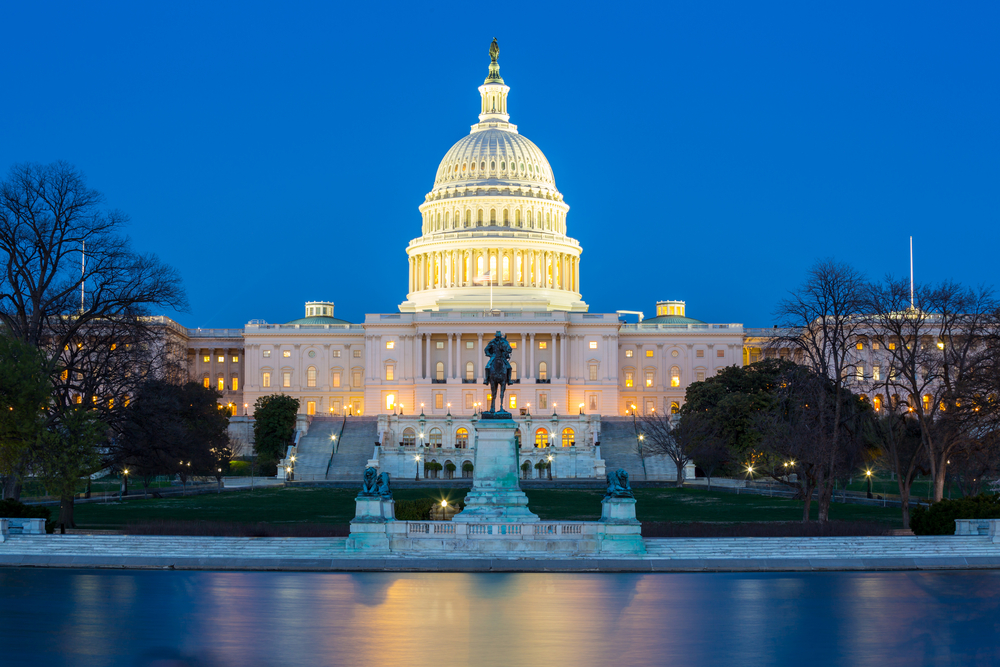

President Trump’s Postal Task Force Opens Debate on Package Shipping in the Senate
Remember how President Trump tweeted about Amazon and the USPS a bunch, and then put together a Task Force to look into it? Well, a Senate hearing took place in Washington, D.C. on March 12th, where the Task Force, USPS, and regulators discussed their findings.
The American shipping community had highly anticipated this hearing ever since the report was released in December. Let’s get into it, shall we?
The Bottom Line: USPS Needs Congressional Help
Here’s what’s going on: the US Postal Service needs some serious help, plain and simple. Their debt keeps growing year after year, and the organization recently reported a $3.9 billion loss in fiscal year 2018.
By now, you’re probably thinking USPS just needs to find a way to make more money or cut more costs, right? That’s true, but the solution isn’t so simple.
Keys Points the Postal Task Force Made
After a cursory analysis of the shipping industry, Trump’s Postal Task Force wrote a report that summarized some key concepts:
- The Postal Service should be self-sufficient
- It should not be fully privatized, as its partial-privatization model is beneficial
- Our country needs the Postal Service, especially the broad swaths of rural America that rely on eCommerce to access the marketplace
The Task Force’s conclusions are nothing new; the Postal Service itself has been saying this stuff for years. The difference is, USPS has more insight into the actual problems they’re dealing with. The Task Force jumping in with their suggestions is sort of like watching your grandma use a computer—they’ve only got the basics.
Parcels Are Not the Problem
One of the main recommendations from the Postal Task Force will shock every business that ships with USPS. The Task Force thinks USPS needs to raise rates even higher! As it is, eCommerce businesses have already seen their USPS shipping costs skyrocket with huge rate increases year-over-year. Now, Trump’s Task Force is recommending that businesses pay even more for USPS shipping. Yeesh.
Despite the Task Force’s criticism that parcel shipping rates are too low, testimony in the hearing made clear that packages are actually the only thing keeping USPS going. Robert Taub, the Chairman of the Postal Regulatory Commission, put it simply.
“Frankly, parcels are the one bright spot remaining in the Postal Service,” Taub said.
Taub also noted that parcels make up only 3.9% of USPS’ total volume, but contribute nearly 30% of the organization’s profit margin. This proves that affordable shipping rates are not what’s straining USPS’ financial health.
Essential vs. Non-Essential Parcels
In recommending higher shipping rates, the Postal Task Force made one proposal that can seriously harm the American economy. The Task Force thinks the government should divide USPS parcels into two categories: essential (which cost less) and non-essential (which cost more). The Task Force argues that eCommerce packages should be considered “non-essential” due to the commercial nature of the shipments. As a result, small business owners across the country would be forced to pay higher shipping rates. This is all because someone in the Federal Government decided they are selling “non-essential” goods.
Senator Mike Enzi provided a perfect example for his snowy home state of why we should be worried about this proposal.
“Delivering winter gloves to someone in Wyoming in January may be very essential, but doing the same thing for Florida might not be,” Enzi said.
Highlighting the flaws in the Task Force’s logic underlines a bigger point: why should the government determine what is essential or non-essential in a free market economy? If the government forced USPS to raise rates on what’s already the most profitable part of USPS, small businesses everywhere would suffer… and that’s the antithesis of the Postal Service’s constitutional duty to provide universal and affordable service to every American.
Therefore, the puzzle we’re trying to solve is how can USPS cut its costs, while still serving the nation with affordable shipping?
The Real Problem is the Pre-Funding
Many parts of the hearing pointed out that the solution is not to raise parcel rates (and consequently hurt businesses that rely on USPS), but to redraft pre-funding legislation. The precarious financial situation USPS is in is not due to low shipping rates, but to being forced to pre-fund future employees’ health and retirement benefits. In fact, pre-funding accounted for over 90% of USPS’ total loss in 2018.
Senator Gary Peters of Michigan perfectly summed up USPS’ pre-funding problem during the hearing.
“There’s broad consensus that the pre-funding obligation is probably the most significant drain on Postal Service finances today,” Peters said.
Unfortunately, this particular issue is out of the Postal Service’s control. Congress enacted a federal mandate in 2006 that requires USPS to pre-fund their future employees’ benefits decades in advance. Those future employees haven’t even been born yet! No company in the world pre-funds at this level, or would ever dream of it. This legislation has to change for USPS to become sustainable, and only Congress has the power to make it happen.
So…Where Are We Now?
USPS is one of the cornerstones of the American economy. The organization is at the center of a $1.4 trillion mailing industry that employs 7.5 million people across the country. That number accounts for roughly 6% of our nation’s jobs! In fact, USPS paid out nearly $16 billion in postal contracts for the fiscal year 2018. Think about how many jobs our nation’s postal infrastructure creates…and that doesn’t include any of the millions of businesses that rely on the Postal Service to deliver their packages. It’s a lot!
Vice Chairman of USPS’ Board of Governors David Williams highlighted the importance of USPS with one simple statement.
“I believe the role of a public infrastructure is not to maximize profit, but to maximize value to our American supply chains and to citizens,” he said. “Especially those in rural and underserved urban areas. High shipping prices steal value from American supply chains, all the way from the producers’ assembly lines to the wallets of American citizens.”
At the end of the day, the Postal Task Force didn’t offer any proposals that the shipping industry or USPS management and employees agree with. However, everyone can agree on one thing. We need to ensure the future of a healthy Postal Service, and we need to do it soon. The US Postal Service is essential to the American economy, and it must evolve in order to become sustainable. The 1.4 trillion-dollar question is: how?


Be the first to comment!